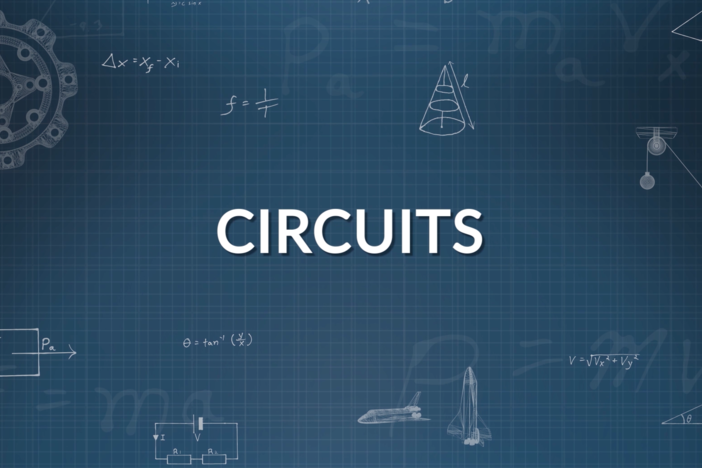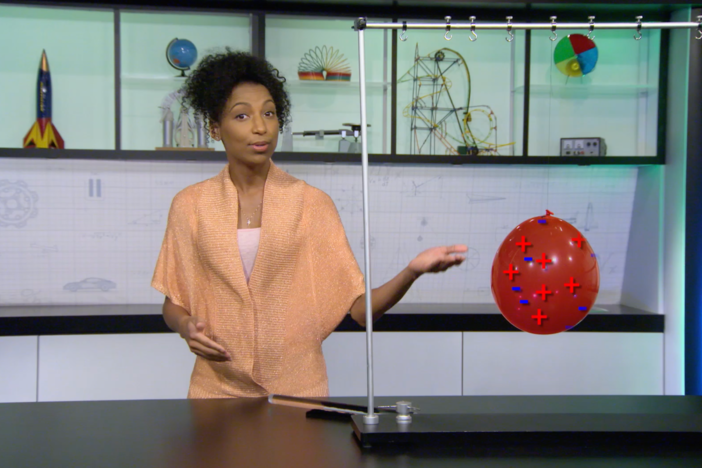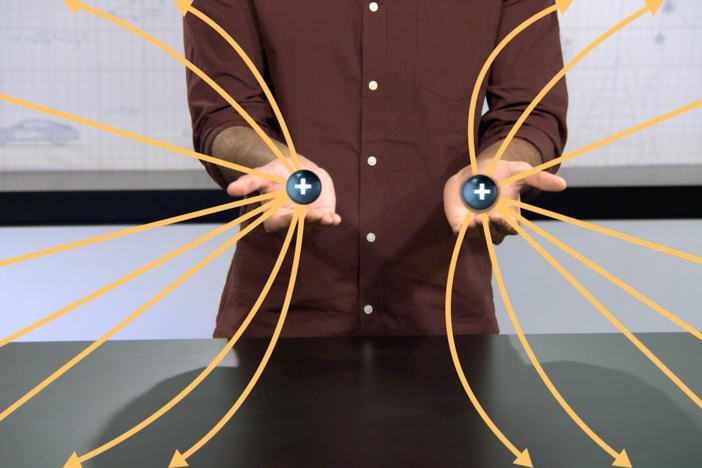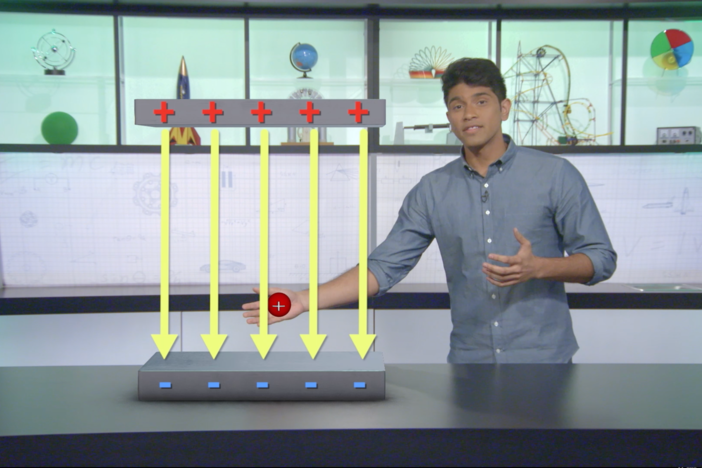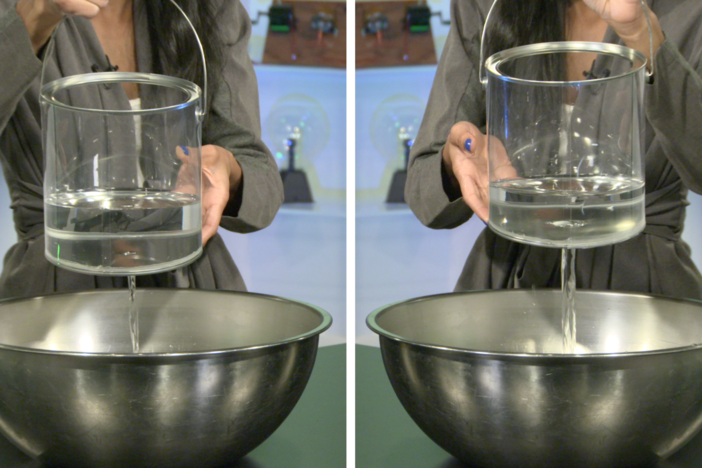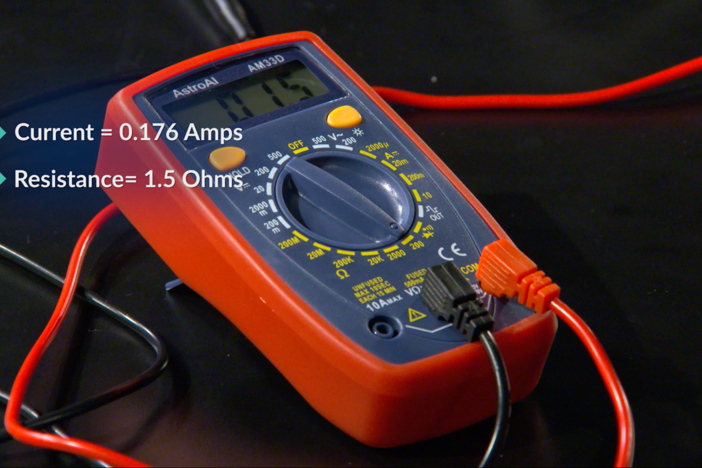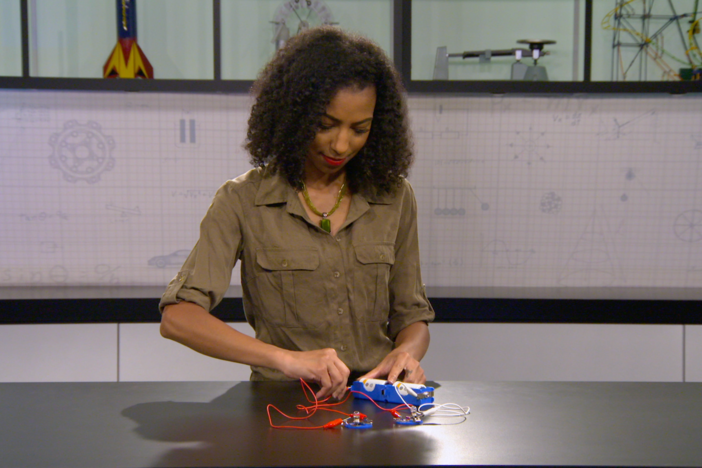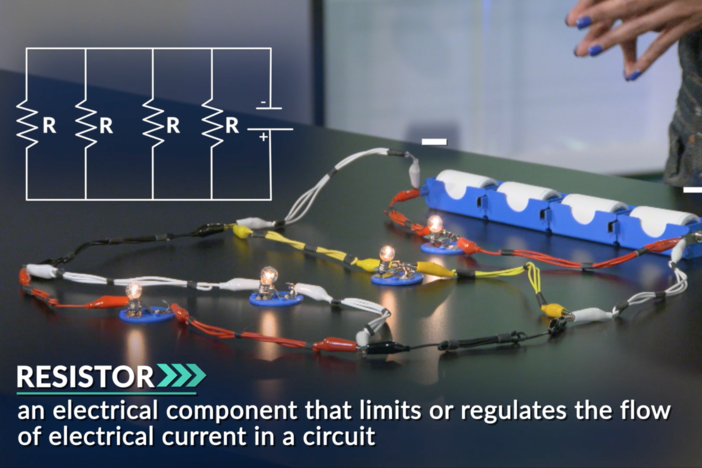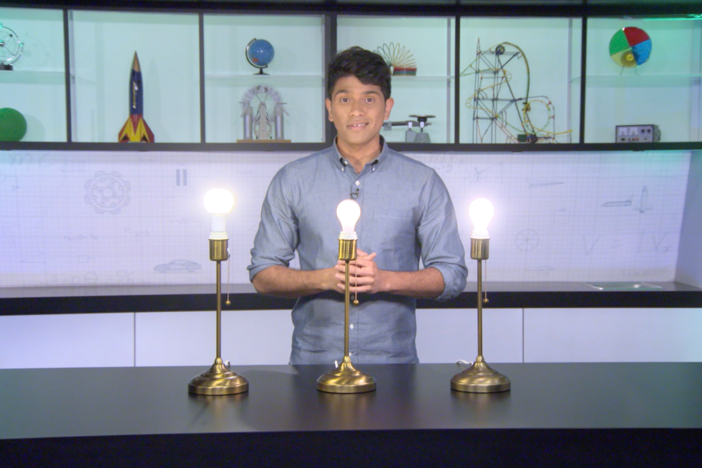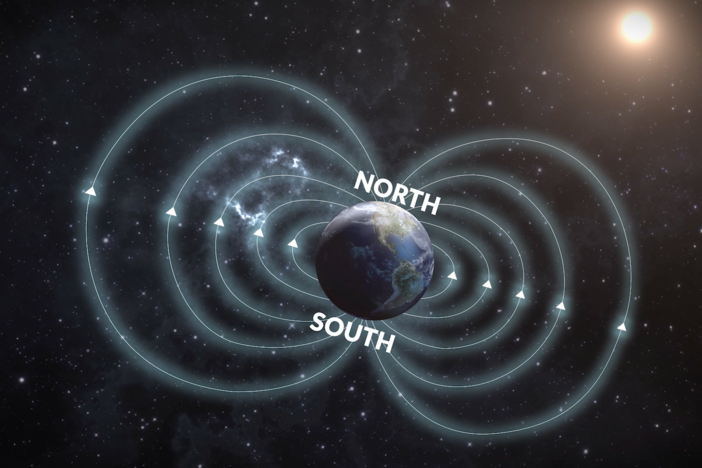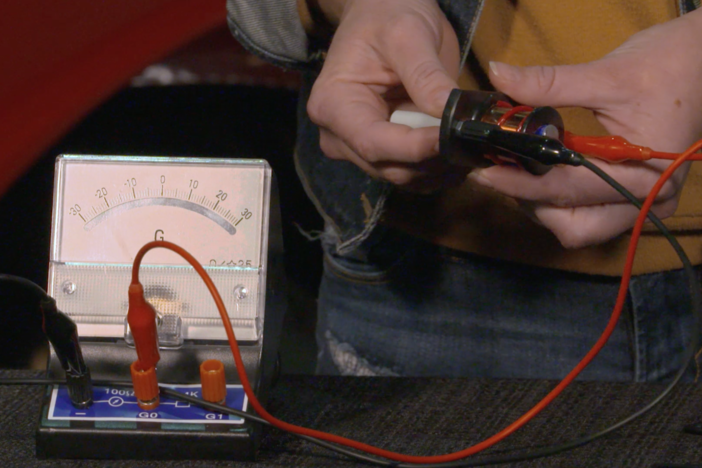Segment H: Parallel and Complex Circuits
We define the properties of parallel and complex circuits. We examine how to find the total voltage, current, and resistance of parallel and complex circuits. We also use a V.I.R. chart to find these things across individual resistors within a circuit.
Segment H: Parallel and Complex Circuits
We define the properties of parallel and complex circuits. We examine how to find the total voltage, current, and resistance of parallel and complex circuits. We also use a V.I.R. chart to find these things across individual resistors within a circuit.
Science
Obtain, evaluate, and communicate information about electrical and magnetic force interactions.
Plan and carry out an investigation of the relationship between voltage, current, and power for direct current circuits.
Obtain, evaluate, and communicate information to explain the properties of and relationships between electricity and magnetism.
Develop and use models to illustrate and explain the conventional flow (direct and alternating) of current and the flow of electrons in simple series and parallel circuits.
-Compare and contrast the behavior of parallel circuits to series circuits.
-Investigate voltage distribution in a parallel circuit using light bulbs as resistors.
-Calculate the equivalent resistance for a parallel circuit and a complex circuit.
-Determine the voltage, current, and resistance for a parallel circuit and a complex circuit as a whole and and for individual resistors within a parallel circuit and a complex circuit.
-Understand that the total voltage in a parallel circuit is equal to the voltage in each resistor in the circuit.
-Understand that the total current in a parallel circuit is equal to the sum of the currents of the individual resistors in the circuit.
-Use the V.I.R. chart as a strategy in solving complex circuit problems.
complex circuit - a circuit that consists of series and parallel circuit components.
electric potential (V) - also known as voltage, the energy capacity of a unit of charge; the SI unit is the volt (V).
equivalent resistance (Req) - the total resistance of a collection of resistors; for a series circuit, is equal to the sum of the resistances of the individual resistors. For a parallel circuit, the reciprocal of the equivalent resistance is equal to the reciprocal of each of the resistances of the individual resistors.
Ohm’s Law - law formulated by Georg Ohm that relates current, voltage, and resistance within a circuit; voltage is equal to current times resistance.
parallel circuit - a closed circuit in which the current divides into two or more paths before recombining to complete the circuit.
The Physics in Motion teacher toolkit provides instructions and answer keys for study questions, practice problems, labs for all seven units of study. GPB offers the teacher toolkit at no cost to Georgia educators.To order your teacher toolkit, complete and submit this form to request the teacher toolkit. You only need to submit this form one time to get materials for all seven units.
